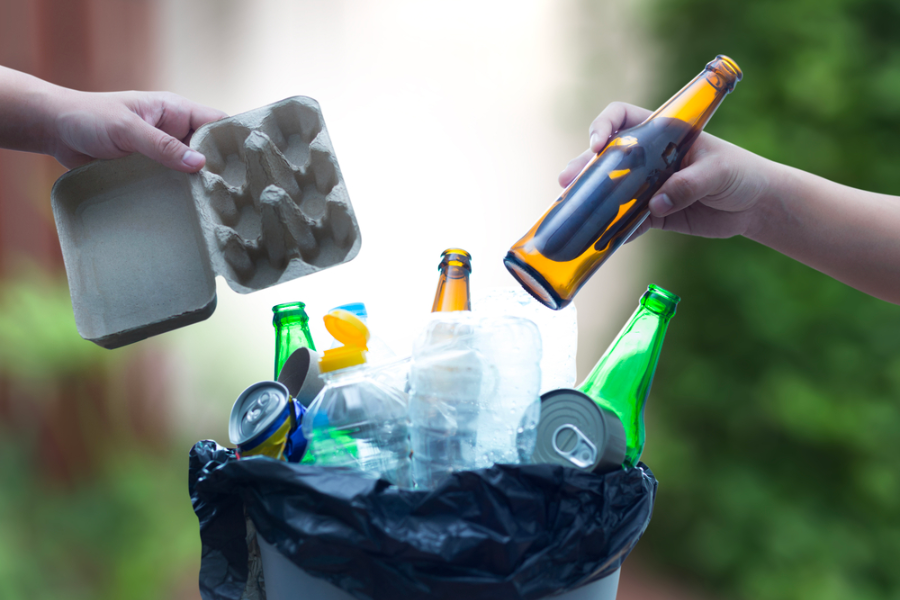Recycling...Challenges and Successes
September 15, 2015
Today’s Guest Blog is by Susan Robinson, Director of Public Affairs for Waste Management.
Lately there has been a lot of discussion about the “stagnant” recycling rate. Yet, since 2000, per person waste generation in the U.S. is down by 8%, bottles and cans weigh 30% less, and we generate 20% less paper packaging. We are successfully achieving the goals of the waste hierarchy by reducing waste, and we are recycling more volume than we have in the past, even though our recycling weight has not increased.
As long as we measure success by the percentage recycled, and as long as we only focus on end-of-life recycling, we will miss the true meaning behind sustainability materials management. Further, we are striving to achieve recycling goals that will only become more elusive as our waste stream becomes lighter. What should our waste management goals be, and how should we measure success?
Challenges of Recycling – higher processing costs and lower commodity values.
Recycling logistics and economics have become complicated by ongoing changes to the waste stream, with more plastic and less paper. These changes result in increased recycling processing costs and decreased value per ton of recyclables. Further, commodity prices are down, due to slower growth in China and lower oil prices. This trend toward higher cost and lower commodity revenue is not a recipe for economically sustainable recycling success.
Life Cycle Thinking – the challenge ahead
When recycling conserves natural resources and reduces GHG emissions, everyone benefits. But those global benefits aren’t always apparent in the economic cycles of the recycling market. To really hit the ball out of the park, we need to encourage local communities to make recycling a larger part of their value system. Consumers must value the environmental stewardship they create by recycling all of the commodities the market will embrace.
In short, policies should encourage “recycling with integrity” which means “no diversion merely for the sake of diversion.” The best way to do this is by establishing community policies that embrace Life Cycle Thinking, whereby we evaluate materials at a broader level to determine their optimal disposition.
Instead of setting goals that rely on the percentage recycled, programs should be developed based on energy and GHG emissions reduced, as well as the highest and best use of a product or package through its entire life cycle. For example, we should appreciate the GHG emissions saved by recycling every aluminum can. We should also appreciate that some kinds of plastic cannot currently be recycled, but through light-weighting still significantly reduce energy use and GHG emissions -- putting them in the recycling bin only adds processing emissions for material that ultimately will be landfilled.
Finally, let’s celebrate our successes along the way rather than setting unrealistic goals that set us up for failure.
Like many of the most important things in life, the highest levels of success will take time and hard work. Setting realistic goals, with milestones along the way, will help maintain motivation and community commitment for the long haul.
Waste Management is working to reconcile these issues. We recognize the importance of getting the economic models right, improving the quality of recyclables collected and “recycling with integrity.” Importantly, we are committed to the principles of the Waste Hierarchy in concert with the concepts of Life Cycle Thinking – and measuring success accordingly.
And the solution is……
This brings us back to the question of the right goal, and how to measure it. It is time to change our paradigm from setting unrealistic recycling goals that are increasingly difficult to achieve as our waste stream moves towards light-weighted and energy efficient materials design. Rather, it’s time to shift our solid waste management goals to a “per capita disposal goal” (proposed in Massachusetts this year) that will capture the value of waste reduction, the highest priority on the waste hierarchy. A measurement of per capita disposal in concert with a move towards a life cycle thinking approach will establish the right signals for truly sustainable materials management practices.
Ms. Robinson is the Director of Public Affairs for Waste Management. She has worked in the environmental industry for 30 years in roles that span the public sector, non-profit, consultancy, and over twenty years in the private sector. Her experience includes global commodity marketing, research and analysis of industry trends, and twenty years managing municipal solid waste and recycling contracts. She currently works with Waste Management’s recycling, innovative technology and fleet teams, supporting the company’s transformation from disposal to a materials management and renewable energy company. She is responsible for the company’s public policy efforts to support this transition.
NERC welcomes Guest Blog submissions. To inquire about submitting articles contact Megan Schulz-Fontes. Disclaimer: Guest blogs represent the opinion of the writers and may not reflect the policy or position of the Northeast Recycling Council, Inc.
Share Post





